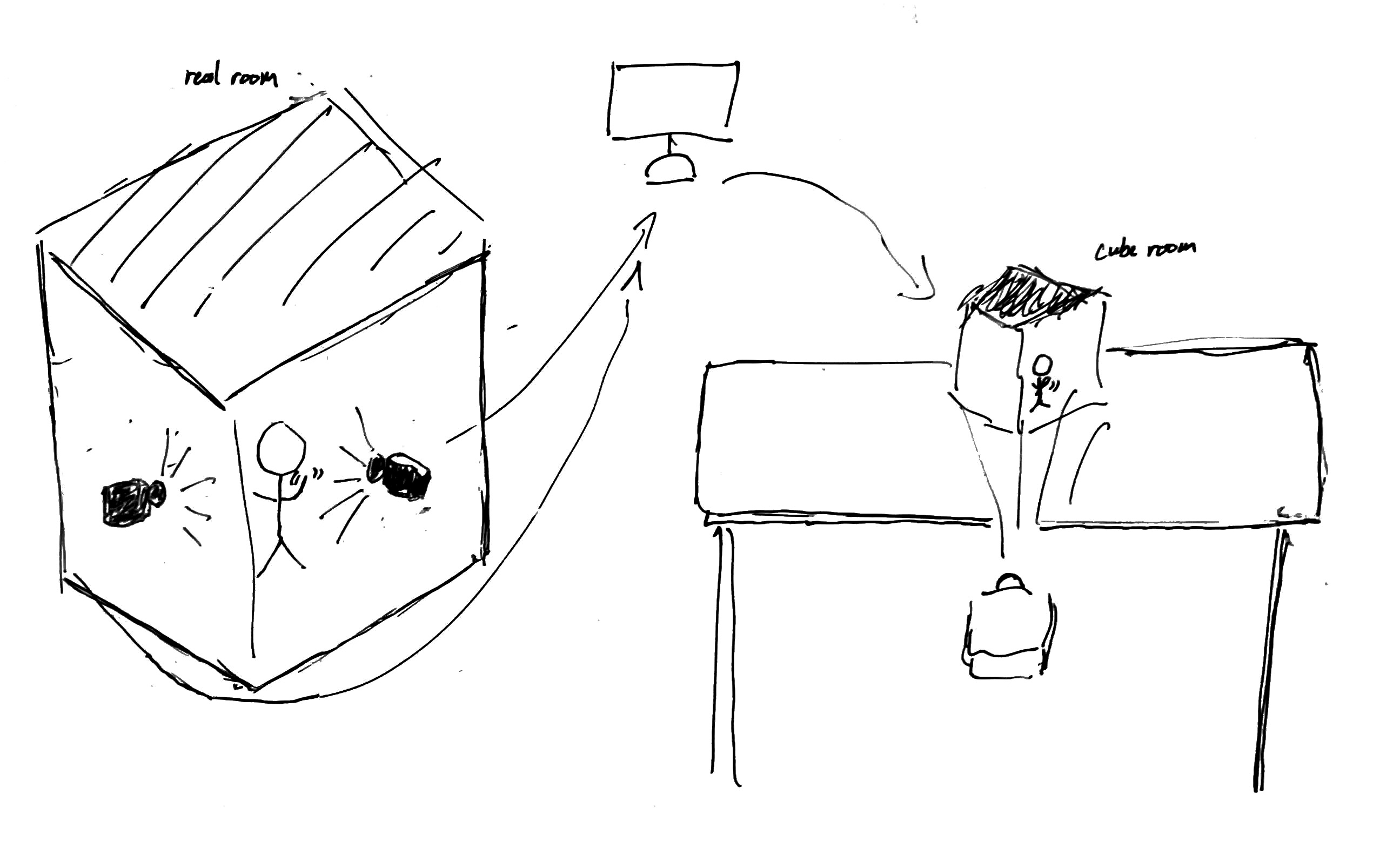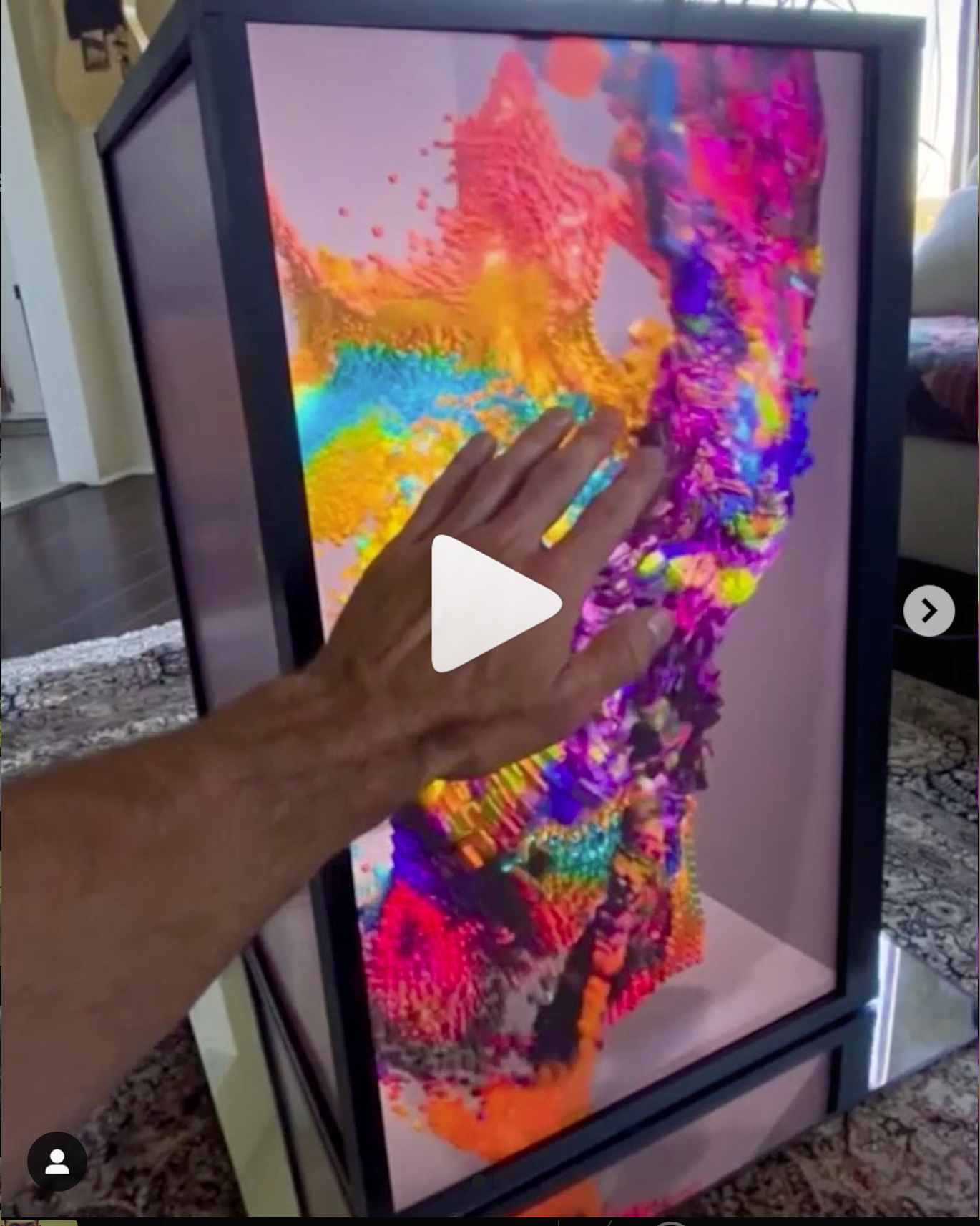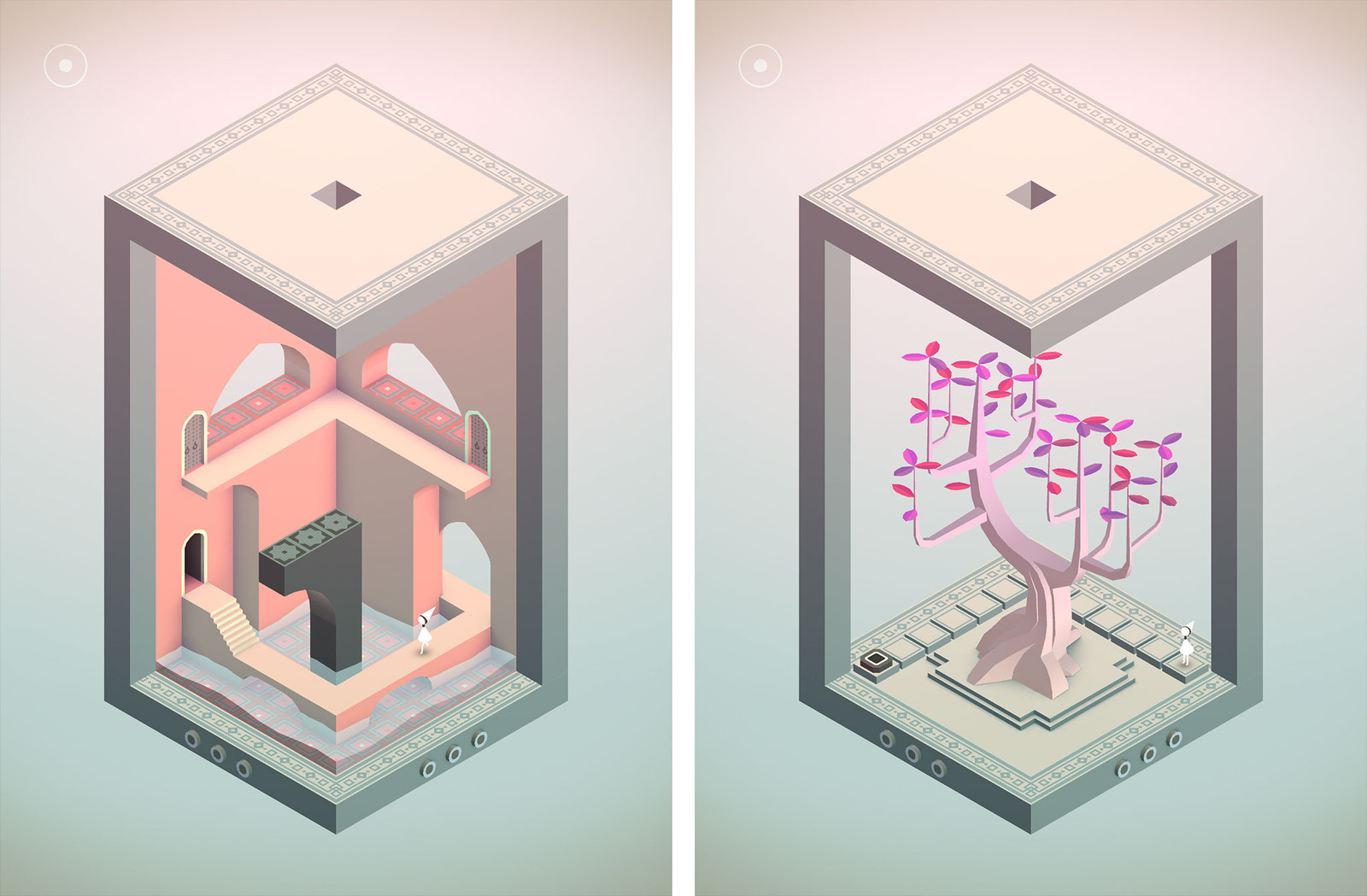A "cube room", an approximately 1-foot cube with faces on the side that show the live interior of a real room. A performer or audience member would be in the real room and would be able to interact with the audience members in front of the cube.

DonNan and I collaborated during the brainstorming phase, and so our ideas have many shared elements. Some key fragments:
- This piece that DonNan found, a cube with a simulated interior that responds to gestures on the surface of the cube.

- The phone game Monument Valley, in which the player manipulates a character moving about many miniature scenes dominated by right angles. (I've played the game before, but the actual reason why it came to mind was because DonNan had her Zoom virtual background set to a graphic from the game.)

- 2 cameras, for capturing live video in the real room
- Equipment for mounting the cameras onto walls in the room
- A lidar distance sensor, for detecting how far the closest audience member is from the cube
- A computer, for playing feedback from the distance sensor and for processing the video data, in the real room
- Stretch goal: A white cardboard cube, and a projector that projects the output image onto the cube. Otherwise, the cube would be simulated in VR.
- An "input" web app runs on each camera input device. (Each camera is either a webcam plugged into a computer, or a phone; it doesn't matter.)
- The "input" web app uses the MediaDevices and WebSockets APIs to capture camera input and send it over the local network to a computer running an "output" web app.
- The "output" web app collects the video input and generates the cube, either in VR, or projection-maps it onto the physical cube.
Projection-mapped cube, or a virtual simulation of a cube